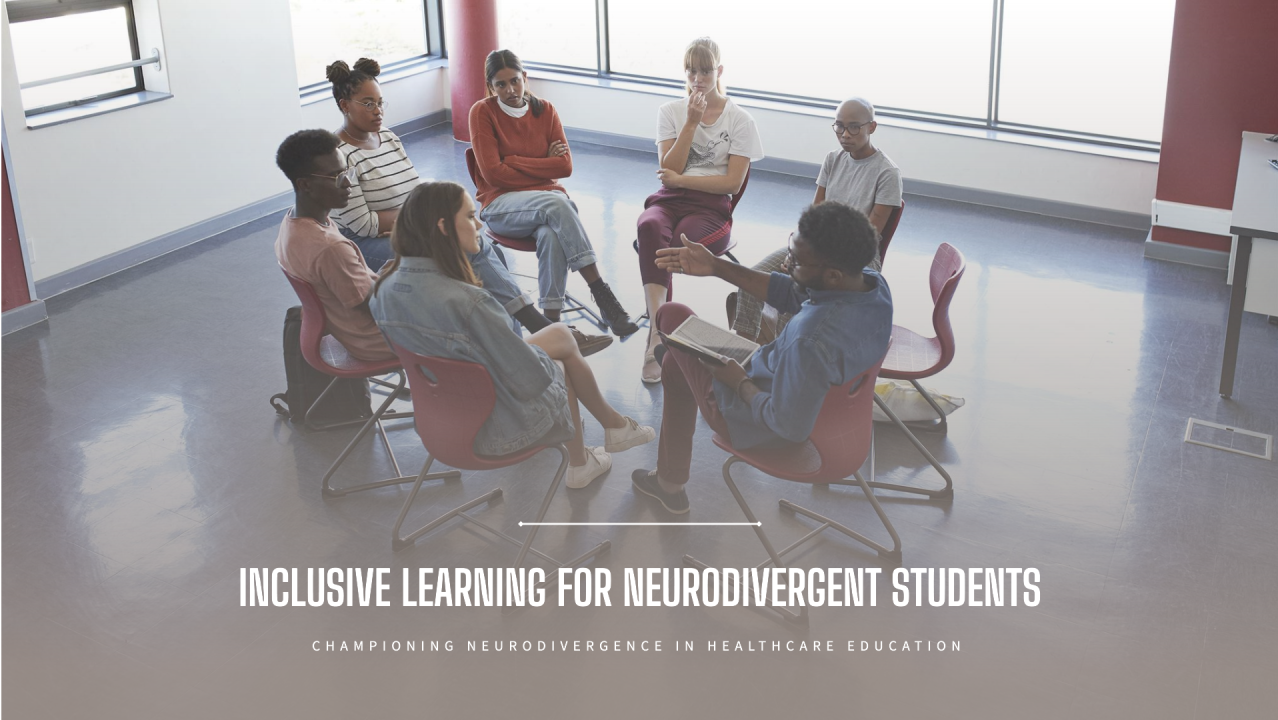
The healthcare sector thrives on diversity – not just in the patient populations we care for but also in the professionals who work within it. As we move forward in creating inclusive and supportive learning environments, it’s essential to acknowledge and address the unique challenges faced by neurodivergent students in healthcare education.
Neurodivergence, including conditions like ADHD, autism, and dyslexia, is not uncommon in the healthcare field. Yet, many education systems and practices are not designed with neurodivergent learners in mind, creating unnecessary barriers. These students often encounter rigid teaching styles, overwhelming sensory environments, and a lack of tailored support that may hinder their progress.
Challenges in Healthcare Education for Neurodivergent Students
Healthcare education, with its focus on clinical practice, often requires students to navigate complex environments under pressure. For neurodivergent students, these learning experiences can present additional difficulties. High-stakes assessments, fast-paced practical sessions, and sensory overload in clinical or simulation environments are just a few examples.
Take ADHD, for example. While students with ADHD can excel in dynamic, hands-on learning environments, they may struggle with traditional lecture-based learning, especially when lessons are long and lack interactive elements. Similarly, students on the autism spectrum may find sensory aspects of clinical simulation overwhelming, or experience difficulty with unexpected changes in routine during practical assessments.
How Can Educators Support Neurodivergent Learners?
Creating a supportive and inclusive environment for neurodivergent students isn’t just a box-ticking exercise – it’s about helping all students reach their full potential. There are simple, effective strategies that educators can adopt:
- Flexible Learning Styles: Offer multiple learning modalities, including visual, auditory, and kinesthetic, so students can engage with material in ways that suit their strengths. Incorporating hands-on learning, interactive simulations, and visual aids can enhance the learning experience for neurodivergent students.
- Sensory-Friendly Simulation Environments: Consider making adjustments to simulation environments, such as controlling noise levels, reducing distractions, and ensuring that instructions are clear and structured. This can help neurodivergent students feel more comfortable and focused during practical learning sessions.
- Personalised Feedback and Support: One-size-fits-all feedback may not work for everyone. Offering personalised, constructive feedback, along with time for reflective practice, can help neurodivergent students build confidence and improve their clinical skills in a supportive manner.
- Routine and Predictability: For many neurodivergent learners, clear schedules and structured learning environments provide a sense of control. Giving students advance notice of changes or the layout of a simulation session can help reduce anxiety and set them up for success.
Advocating for Neurodivergence in the Workplace
As a lecturer and a paramedic, I believe in the importance of creating a more inclusive future for neurodivergent professionals. Through awareness and small adaptations, we can foster a healthcare workforce that is not only skilled but also reflective of the diversity within our communities.
By implementing supportive strategies within healthcare education, we create an environment where all students – neurodivergent and neurotypical – can thrive and succeed. As educators, it’s our responsibility to ensure that learning spaces are as inclusive as the care we aim for our students to provide.
Leave a Reply